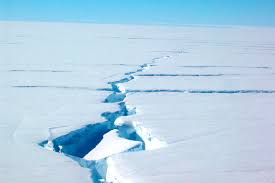 The Nwe York Times
The Nwe York Times
Few thought it would arrive so quickly. Now we’re facing consequences once viewed as fringe scenarios.
By Eugene Linden
Mr. Linden has written widely about climate change.
- Nov. 8, 2019
For decades, most scientists saw climate change as a distant prospect. We now know that thinking was wrong. This summer, for instance, a heat wave in Europe penetrated the Arctic, pushing temperatures into the 80s across much of the Far North and, according to the Belgian climate scientist Xavier Fettweis, melting some 40 billion tons of Greenland’s ice sheet.
Had a scientist in the early 1990s suggested that within 25 years a single heat wave would measurably raise sea levels, at an estimated two one-hundredths of an inch, bake the Arctic and produce Sahara-like temperatures in Paris and Berlin, the prediction would have been dismissed as alarmist. But many worst-case scenarios from that time are now realities.
Science is a process of discovery. It can move slowly as the pieces of a puzzle fall together and scientists refine their investigative tools. But in the case of climate, this deliberation has been accompanied by inertia born of bureaucratic caution and politics. A recent essay in Scientific American argued that scientists “tend to underestimate the severity of threats and the rapidity with which they might unfold” and said one of the reasons was “the perceived need for consensus.” This has had severe consequences, diluting what should have been a sense of urgency and vastly understating the looming costs of adaptation and dislocation as the planet continues to warm.
In 1990, the Intergovernmental Panel on Climate Change, the United Nations group of thousands of scientists representing 195 countries, said in its first report that climate change would arrive at a stately pace, that the methane-laden Arctic permafrost was not in danger of thawing, and that the Antarctic ice sheets were stable.
Relying on the climate change panel’s assessment, economists estimated that the economic hit would be small, providing further ammunition against an aggressive approach to reducing emissions and to building resilience to climate change.
As we now know, all of those predictions turned out to be completely wrong. Which makes you wonder whether the projected risks of further warming, dire as they are, might still be understated. How bad will things get?
So far, the costs of underestimation have been enormous. New York City’s subway system did not flood in its first 108 years, but Hurricane Sandy’s 2012 storm surge caused nearly $5 billion in water damage, much of which is still not repaired. In 2017, Hurricane Harvey gave Houston and the surrounding region a $125 billion lesson about the costs of misjudging the potential for floods.
The climate change panel seems finally to have caught up with the gravity of the climate crisis. Last year, the organization detailed the extraordinary difficulty of limiting warming to 2.7 degrees Fahrenheit (1.5 degrees Celsius), over the next 80 years, and the grim consequences that will result even if that goal is met.
More likely, a separate United Nations report concluded, we are headed for warming of at least 5.4 degrees Fahrenheit. That will come with almost unimaginable damage to economies and ecosystems. Unfortunately, this dose of reality arrives more than 30 years after human-caused climate change became a mainstream issue.



